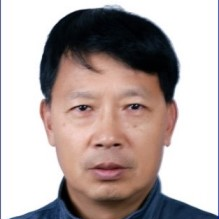Marine Ecological Monitoring, Assessment and Protection
A special issue of Water (ISSN 2073-4441). This special issue belongs to the section "Biodiversity and Functionality of Aquatic Ecosystems".
Deadline for manuscript submissions: closed (20 March 2024) | Viewed by 3947
Special Issue Editors
Interests: carbon cycle; microbial interaction; photosynthesis; heterotrophic protist; marine ecosystem; metabolic regulation
Interests: marine microbial ecology; ocean carbon cycling; environmental monitoring and management; marine microalgae energy; synthetic biology
Special Issues, Collections and Topics in MDPI journals
Interests: pathogenic microbiology; risk assessment; concentration prediction; enteric viruses; marine microbial ecology; microbial diversity; microbial source tracking
Special Issue Information
Dear Colleagues,
Marine ecosystems represent the majority of habitable space on Earth, harbor great biodiversity, and play a fundamental role in global biogeochemical cycles and climate regulation. The current health of the ocean ecosystem has been challenged with increasing anthropogenic disturbance (e.g., CO2 emission, pollution and overfishing) and climate change (e.g., global warming and extreme weathers). Consequentially, the ocean is experiencing rapid changes, including seawater temperature increases, sea-level rise, eutrophication/hypoxia and acidification. This Special Issue focuses on research advances in marine monitoring, assessment and protection that help us to understand the causes and impacts of, and solutions for, marine ecological changes and disasters. Through multidisciplinary research contributed by peers across the marine and environmental sciences, we aim to improve our understanding of fundamental science and practical tools needed to achieve a healthier relationship between humans and the ocean. This Special Issue welcomes a broad range of research types (original results, reviews and opinions/letters). The main interests and scope of this Special Issue include, but are not limited to, the following perspectives.
(1) Empirical study using field observations and experimental approaches to provide new insights into marine ecological structures, biodiversity, functions and processes in various marine environments;
(2) Model development, statistical and computational tools for a better understanding of the current and future oceans;
(3) Advanced techniques developed for short- and long-term marine ecosystems monitoring, assessment and protection;
(4) Proposed human interventions, ecological engineering tools and solutions to reduce ecological risks related to human impact and climate change in the ocean.
Dr. Ningdong Xie
Prof. Dr. Guangyi Wang
Prof. Dr. Hongxia Ming
Dr. Qian Li
Guest Editors
Manuscript Submission Information
Manuscripts should be submitted online at www.mdpi.com by registering and logging in to this website. Once you are registered, click here to go to the submission form. Manuscripts can be submitted until the deadline. All submissions that pass pre-check are peer-reviewed. Accepted papers will be published continuously in the journal (as soon as accepted) and will be listed together on the special issue website. Research articles, review articles as well as short communications are invited. For planned papers, a title and short abstract (about 100 words) can be sent to the Editorial Office for announcement on this website.
Submitted manuscripts should not have been published previously, nor be under consideration for publication elsewhere (except conference proceedings papers). All manuscripts are thoroughly refereed through a single-blind peer-review process. A guide for authors and other relevant information for submission of manuscripts is available on the Instructions for Authors page. Water is an international peer-reviewed open access semimonthly journal published by MDPI.
Please visit the Instructions for Authors page before submitting a manuscript. The Article Processing Charge (APC) for publication in this open access journal is 2600 CHF (Swiss Francs). Submitted papers should be well formatted and use good English. Authors may use MDPI's English editing service prior to publication or during author revisions.
Keywords
- marine ecosystem
- monitoring
- assessment
- protection
- biodiversity








